#A Lost Lady 1934
Explore tagged Tumblr posts
Text
The Age of Giants
Otto Klemperer rehearsing at the Hollywood Bowl in September 1937. (Los Angeles Philharmonic) The 20th century was an age of big personalities in classical music, among them Otto Klemperer (1885-1973), a German-born protégé of the composer and conductor Gustav Mahler. Klemperer was already an established conductor in opera houses around Germany when the rise of the Nazis prompted the maestro to…
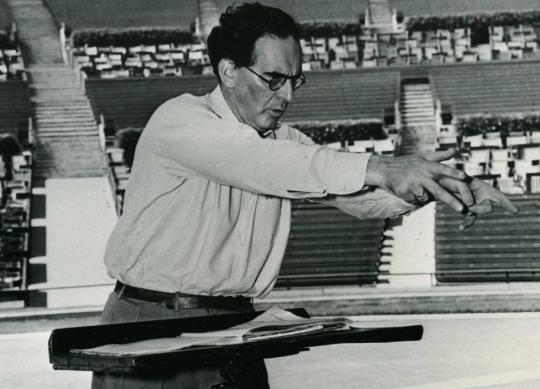
View On WordPress
#A Lost Lady 1934#Alan Dunn#Barbara Shermund#Bruno Hauptmann#Constantin Alajalov#E.B. White#George Price#Helen Hokinson#Isadore Klein#Jack Markow#James Thurber#John Mosher#Lewis Mumford#Lindbergh kidnapping#Miguel Covarrubias#Morris Markey#Otto Klemperer#Peter Arno#Rainbow Room#The Dakota New York#Werner Klemperer
1 note
·
View note
Text

Barbara Stanwyck in A Lost Lady (dir. Alfred E. Green & Phil Rosen, 1934)
84 notes
·
View notes
Text


Scottish novelist and poet Naomi Mitchison was born in Edinburgh on November 1st in 1897.
Best known as a novelist and social commentator, but Naomi Mitchison also wrote and published poetry, much of which is rooted in her Scottish background.
Born to Louisa Kathleen Trotter and John Scott Haldane, a distinguished scientist based in Oxford, where Naomi Haldane grew up. The Scottish connection remained important throughout her childhood, and she spent many summers at Cloan in Perthshire, the Haldanes’ family home. Although her formal education was limited, she was steeped in an environment of scientific and creative enquiry which influenced her entire life.
Naomi married Dick Mitchison while he was on a short break from the Battlefields of Flanders in 1916, he was later injured in the war and it had a profound effect on the rest of his life and hers.
Both of them passionately wanted the post-war world to be a different and better place and were determined to do something about it, with explosive energy, Mitchison managed to write prolifically and variously; to work in the pioneer days at the North Kensington family planning clinic and for many other good causes. Her husband went into politics and she supported him and his socialist values wholeheartedly. He eventually went to the Lords and Naomi hated being called Lady Mitchison. The Mitchison house at Hammersmith was famous for its parties in happy or anxious times. The guest lists covered a wide spectrum from all walks of life, politicians, writers, lords, unknown proteges, refugees and strange lost foreigners from all over the world.
This generous style of hospitality continued at their Scottish home at Carradale in Argyll. The large house gathered in all kinds of waifs and strays among the famous and unreproached scroungers; and then the Mitchison grandchildren and great-grandchildren joined the mix. Naomi's wartime diary, Among You Taking Notes... , is a vivid description of that period, and of her own pivotal role in it.
She would go on to become a local councillor and member of the Highland Panel, which began the process of Highland regeneration, but in both roles she was frustrated by bureaucracy and apathy, you can imagine The Highlands in the 60's!
Mitchison was able to write anywhere, which helped because - as a compulsive traveller - she could get on with her writing on planes or in trains. She went to the US in the 1930s, because she was worried about tenant farmers rights; to Vienna in 1934 when the Nazi-era storm clouds gathered, and she smuggled letters from endangered people to Switzerland in her knickers. In 1952, she went to Moscow as a member of the Authors' World Peace Appeal. She went regularly to Africa, especially to Botswana, where she was made a sort of tribal mother to the Bakgatla people and helped them practically. Wherever she was in the world, she seemed to have an instinctive understanding of the country and people around her, a remarkable woman.
In later years, she was sometimes anxious and depressed - not for herself, but for the future. She often said that two wars in a lifetime were too many. She was totally opposed to nuclear weaponry and was fearful that science would destroy, rather than enrich, mankind.
In old age, she watched many of her generation die: but with great generosity of spirit she visited and comforted many of them to the end.
Naomi Mitchison spent the last years of her life at Carradale, where she died in January 1999 aged 101.
Kintyre
I wake when the wind changes. Beyond the dark Firth far, Where the waves clap and the tides rustle and the herring are, At the far side of the great Clyde the wind ranges. I wake as it changes.
If snow flew or mist blew East on the hills of Renfrew, Here, Arran sheltered, we might never know, Get no breath of sleet or hard snow, Until across the mountain ranges The wind backs and changes.
Clear starlight as sleep takes me, But a cloud creeps from the side. My dream no more ranges Through a universe at rest, But quick through the window wide, From Atlantic on the west Or from east beyond Clyde, Leaps anxious into my breast. I wake when the wind changes.
11 notes
·
View notes
Text
Honesty
USOPP x GN!READER
note: THIS IS A REUPLOAD!!! content: fluff, sfw, reader and usopp are both oblivious losers, requited feelings, confessions. WC: 1934

Everyone on the crew knew. Everyone.
It was going old how often Nami would have to grab Usopp's attention from looking your way or when Sanji would have to hold his hand out while you mindlessly walked somewhere, too infatuated with the Usopp as he went about his “real” adventures. The small side glances you'd often share as you sat beside each other at the dinner table, it was obvious the feelings you two had for each other.
Well, expect the two of you.
It was aggravating for the rest of the crew to have to witness, desperately wishing that one day one of you would slip up and finally say something to the other but the day just seemed like it was never gonna show up. No matter how many attempts Sanji made to hint towards Usopp about your feelings, causing you to turn into a bright red tomato.
Today was like any normal day, minus the quick stop because your captain was becoming restless and Nami just couldn’t stand it anymore. You hummed as you put things into your bag, keeping it light so you’d have space to store more things within. Just in case you found anything interesting, for yourself or Usopp. You reached over to grab something and stopped as you stared at the small necklace that Usopp had gotten you a while back, he handed it to you in a rush with a quick jumble of words before he ran off somewhere. You giggled as you grabbed the necklace, bringing it up to your neck and hooking together letting it hang down your chest.
You hummed pleased with the assortment of items you had, so you stood yourself up and placed the bag over your shoulder. You pivoted on your shoes and made your way out of the room that you shared with Nami, you had noticed that everyone had already rushed off wasting no time to get off the boat and walk through the grass and find new interesting bugs; well mostly Luffy. You frowned slightly, not wanting to have to venture to the island by yourself. You let out a small huff as you began to walk towards the ladder to get off the ship, “Hey!” You heard a voice call out from behind you making you immediately snap to see holding your hands up ready to punch whoever. You froze as you saw Usopp stare at you shocked before chuckling, “Sorry, didn’t mean to scare you.” He says while you let out a sigh of relief and drop your hands to the side, “You scared the shit out of me Usopp!” You scold the boy.
Usopp just let out a laugh, a laugh that made your stomach do flips. “I just wanted to wait for you…” He says, his voice trailing off for a moment. “Cause like you know… for protection…” He says trying to sound all cool but it is obvious he was getting a bit nervous. You let out a laugh that caused Usopp to turn his attention straight back to you, “Thank you, Oh brave captain Usopp~” You teased him. Usopp stood there in shock for a moment before he chuckled and nodded, "That's me!" He hummed out in excitement, as he made his way past you and to the ladder off the ship. "Ladies first~" He motioned with his arms for you to go ahead of him, and you gladly went ahead and flung your leg over the ladder. Make sure to take your foot landed on the bar before you swing your other leg over.
He watched you intently to make sure that not even for a second would you slip and fall, he couldn’t risk seeing you hurt. As he watched you he started to think about the fact that he probably should’ve gone first so he would have been able to catch you. While lost in his thought he hadn’t realized that you had safely made it to the bottom and were waiting patiently for him to come down. “Usopp?” Your voice broke him out of his thoughts, “Huh?- Oh!” He blinked staring at you for a moment wondering how long he had simply just stood there whilst you waited so patiently, then his mind went off again. You were so kind and so trusting, it truly amazed him how you were still his friend even after everything.
As he reached the bottom of the ladder he jumped off, landing on the solid ground with a small thud.
He shifted around to look at you with a smile on his face, “Ready?” He asked you as he held out his arm to interlock it with yours, you obliged sliding your arm to hook with his. “Always.” You hum to him, before beginning to lead the way for the both of you. You talked on and on about something that Usopp was not taking in, he was watching the way you used your free hand to talk almost as if you were painting a picture. You asked a question but Usopp didn’t hear it, oblivious to the fact you were asking him and he just admired you. “Usopp?” Your voice broke his thoughts again, usually when any of the straw hats would do that it would upset him. But when you did it, it was like an angel from heaven was bringing him back down to earth before he died simply because of how amazing you were.
“Yeah [name]?” He asked back, as he looked at you hoping that you’d take the lead in making sure they went in the right direction and not run into anyone. “Were you even paying attention?” You asked him, as you turned your attention ahead of the two of you. Making sure the two of you didn’t bump into any island people, weaving in and out of the crowd. “Uhm… Yeah totally!” He responded in a cheerful tone and a cheesy smile on his face, you glanced at his expression immediately knowing that the boy had caught nothing of what you had just explained to him. You let out a soft giggle before the smile quickly faded and your eyebrows furrowed with irritation, “Do people not know how to walk properly?!” You said out in anger, eventually shoving your way through people and into an alleyway that had fewer people.
You let out a sigh of relief, finally free from the busy street and annoyingly slow people. Usopp stood there in shock having not been fully prepared to be shoved through those people and suddenly ending up somewhere a lot more calm, he looked at you before letting out a chuckle. “You hate crowds huh?” He asked, teasing you. You rolled your eyes a small smirk on your lips as you looked around the alleyway, “Some people just don’t deserve legs.” You joked, the joke causing the boy to let out a loud laugh. You turned your head to look at him, you looked at him in slight shock at how he found your joke so funny. The way his head slightly tilted back and his eyes closed as he laughed, it was a beautiful sound and it made your face grow warm from the blush suddenly appearing.
You cleared out your throat before a thought popped up into your head. “Hey, I have an idea.” You say to him in almost a whisper not allowing him time to respond or even think of what you said dragging him along through the alleyway. “[Name]!” He called out, his feet almost struggling to keep up with how fast yours were going. He let out huffs as he started to run out of breath from having to keep up with you, “[Name]..!!” He whined out wanting you to slow down, but even after a small tug, you kept your speed rushing through the alleyway.
As the two of you made your way, you eventually stopped as you came up to a small area. Vines grew down the wall and it was slightly dark small amounts of the sun peeking through the cracks between the buildings, and you decided this place was the perfect area.
Usopp looked around the area, his brows raised as he let out a quiet “oooo…” His eyes darted around the area and you smiled softly as you watched them, before eventually, his eyes met with yours. You feel your posture suddenly straighten out as his attention is on you, you turn to look at the area trying to cover the blush on your cheeks. “It’s pretty isn’t it?” You asked him with a small hum coming from your lips. What you didn’t notice was the way that when Usopp responded his eyes never left your face, “Yeah, it’s beautiful.” He nodded before eventually turning to look around the small area the two of you were now standing in, he slowly walked further in and looked up. The buildings left a small space so that when you looked up it was a perfect view of the sky, you watched him for a moment before you went and stood next to him.
The two of you enjoyed the silence, the sound of distant chatter and seagulls flying overhead.
As you watched the clouds move past quickly you eventually felt your neck begin to hurt, you brought your head down and rolled the knot that started to grow out. You then turned to look at Usopp whose eyes were already on you, your eyebrows raised in shock and your face suddenly became extremely warm. “[Name].” He spoke out to you causing you to lock eyes with him, “Yeah..?” You spoke out with a small sigh, you hadn’t realized but you had been holding your breath. Usopp stared at you for a moment longer before bringing a hand up to your cheek, “I… I think I like you.” He says, letting a sigh of his own from holding his breath.
You stare at him for a moment, it is like a wave of realization has just crashed over you. The more you thought about it the more obvious it became, how he would try to flirt with you and be around you more than the rest of the crew. Usopp hesitated for a moment before slowly bringing his hand down from your face, “My bad, I shouldn’t have…” “No! No…” You cut him off quickly bringing your hand to grab him, “I like you too Usopp.” You told him, and you watched as his face went from sadness to excited shock. “Really??!” He squeezed your hand.
You nod back to him, “Really.” You say. The two of you stare at each other for a minute or so, before you take notice of the way his eyes glance down to your lips and then quickly back up to your eyes. You smile softly, “You can kiss me Usopp.” you whisper as if there would be anyone in a dark alleyway other than you two. Usopp wasted no time before he softly pressed his lips against yours, his free hand going up to cup your cheek. It felt like a dream and you didn’t wanna wake up and you never did, when you opened your eyes and pulled from the kiss he was still there looking back at you.
You couldn’t wait to hear him tell the crew about how he took you to a spot and kissed you. And you knew you wouldn’t correct him.
#— miloonmetis#milometisfics#one piece x reader#one piece#usopp x reader#with: usopp#one piece usopp#usopp#god usopp#op usopp#one piece x you#one piece x y/n#┊͙ ˘͈ᵕ˘͈ miloonepiecefics
24 notes
·
View notes
Text
Claude Rains Character Masterlist!
Here's a handy-dandy guide of all the wonderful characters Claude Rains has portrayed over a nearly seven decade long career. We encourage all to have a gander at all these invisible men, prefects of police, fathers, criminal masterminds, otherworldly beings, and men of history alike! Each link will take you to a picture of that specific character, so even if you're not familiar with them, you can send in propaganda anyhow (such as 'what a lovely wig!', 'astonishing facial hair!', or even 'such a beautiful hat!'). We also realize that two of these characters share a name - John Stevenson (from The Last Outpost and Strange Holiday, respectively), so when submitting propaganda for these characters, please indicate which one! We will try our best to sort through the submissions regardless!
List is in chronological order, however, we are omitting for reasons explained in the pinned post the characters of Clarkis from Build Thy House and The Mayor from The Pied Piper of Hamelin!
(1933) The Invisible Man - Dr. Jack Griffin/The Invisible Man
(1934) Crime Without Passion - Lee Gentry
(1934) The Man Who Reclaimed His Head - Paul Verin
(1935) The Mystery of Edwin Drood - John Jasper
(1935) The Clairvoyant/The Evil Mind - Maximus
(1935) The Last Outpost - John Stevenson
(1936) Hearts Divided - Napoleon Bonaparte
(1936) Anthony Adverse - Marquis Don Luis
(1937) Stolen Holiday - Stefan Orloff
(1937) The Prince and the Pauper - Earl of Hertford/Edward Seymour
(1937) They Won't Forget - D.A. Andrew 'Andy' J. Griffin
(1938) White Banners - Paul Ward
(1938) Gold Is Where You Find It - Colonel Christopher 'Chris' Ferris
(1938) The Adventures of Robin Hood - Prince John
(1938) Four Daughters - Adam Lemp
(1939) They Made Me a Criminal - Detective Monty Phelan
(1939) Juarez - Emperor Louis Napoleon III
(1939) Sons of Liberty - Haym Solomon
(1939) Daughters Courageous - Jim Masters
(1939) Mr. Smith Goes to Washington - Senator Joseph Harrison Paine
(1939) Four Wives - Adam Lemp
(1940) Saturday's Children - Henry Halevy
(1940) The Sea Hawk - Don José Álvarez de Córdoba
(1940) Lady with Red Hair - David Belasco
(1941) Four Mothers - Adam Lemp
(1941) Here Comes Mr. Jordan - Mr. Jordan
(1941) The Wolf Man - Sir John Talbot
(1942) Kings Row - Dr. Alexander Tower
(1942) Moontide - Nutsy
(1942) Now, Voyager - Dr. Jaquith
(1942) Casablanca - Captain Louis Renault
(1943) Forever and a Day - Ambrose Pomfret
(1943) Phantom of the Opera - Erique Claudin/The Phantom
(1944) Passage to Marseille - Captain Freycinet
(1944) Mr. Skeffington - Job Skeffington
(1945) Strange Holiday - John Stevenson
(1945) This Love of Ours - Joseph Targel
(1945) Caesar and Cleopatra - Julius Caesar
(1946) Notorious - Alexander Sebastian
(1946) Angel on My Shoulder - Nick
(1946) Deception - Alexander Hollenius
(1947) The Unsuspected - Victor Grandison
(1949) The Passionate Friends - Howard Justin
(1949) Rope of Sand - Arthur 'Fred' Martingale
(1949) Song of Surrender - Elisha Hunt
(1950) The White Tower - Paul DeLambre
(1950) Where Danger Lives - Frederick Lannington
(1951) Sealed Cargo - Captain Skalder
(1952) The Man Who Watched the Trains Go By/The Paris Express - Kees Poppinga
(1956) Lisbon - Aristides Mavros
(1959) This Earth is Mine - Phillipe Rambeau
(1960) The Lost World - Professor George Edward Challenger
(1961) Battle of the Worlds - Professor Benson
(1962) Lawrence of Arabia - Mr. Dryden
(1963) Twilight of Honor - Art Harper
(1965) The Greatest Story Ever Told - Herod the Great
16 notes
·
View notes
Text

Termite Terrace Club - November 17th
1934 - Buddy Adventures - Dir. Ben Hardaway
1951 - Drip-Along Daffy - Dir. Chuck Jones
TV
1992 - Tiny Toon Adventures Season 3: (“Little Dog Lost” / “Party Crasher Plucky” / “Homeward Bound”)
1993 - Animaniacs Season 1: “Of Nice and Men”/ “What a Dump!” / “Survey Ladies”
7 notes
·
View notes
Text
Louise Beavers

Louise Beavers (March 8, 1900 – October 26, 1962) was an American film and television actress who appeared in dozens of films and two hit television shows from the 1920s to 1960. She played a prominent role in advancing the lives of Black Americans through her work and collaborated with fellow advocates to improve the social standing and media image of the Black population.
Beavers was born in Cincinnati, Ohio to school teacher Ernestine (Monroe) Beavers and William M. Beavers, who was originally from Georgia. Her mother's illness caused the family to move to Pasadena, California.
In Pasadena, she attended school and engaged in several after-school activities, such as basketball and church choir. Her mother also worked as a voice teacher and taught her how to sing. In 1920, Beavers graduated from Pasadena High School. She then worked as a dressing-room attendant for a photographer and served as a personal maid to film star Leatrice Joy.
Beavers' acting career began as a member of the Lady Minstrels, a group of young women who staged amateur productions and appeared on stage at the Loews State Theatre. Charles Butler, an agent for African-American actors, saw one of her early performances and recommended that she audition for a film role.
Beavers was initially hesitant to audition for film roles because of the negative portrayal of blacks in film. She once said, "In all the pictures I had seen… they never used colored people for anything except savages." However, she won a role in the film Uncle Tom’s Cabin (1927) and went on to play stereotypical black roles such as those of a slave, a mother figure, a maid or domestic servant. With Claudette Colbert in Imitation of Life (1934)
After playing the role of Julia, the maid and mother figure to a young white woman, in Coquette (1929), Beavers gained more attention for her work and was able to transition to less stereotypical roles. Beavers played Delilah in Imitation of Life (1934), again in the role of a housekeeper, but instead of the usual stereotypical comedic or purely functional role, Delilah's storyline constitutes a secondary parallel plot in which her problems are given considerable emotional gravity. Some in the media recognized the unfairness of Hollywood's double standard regarding race. A contributor to California Graphic Magazine wrote: "the Academy could not recognize Miss Beavers. She is black!"
In 1936, Beavers married Robert Clark, who later became her manager. Beavers and Clark later divorced.
Beavers played the lead role in the film Reform School (1939), once thought to be a lost film, as a forward-thinking probation officer who becomes the superintendent of a reform school and implements major changes.
In the film Holiday Inn (1942), Beavers performed a song during a minstrel show number celebrating Abraham Lincoln's birthday. Because the number features Bing Crosby and others in blackface, some consider it racially offensive and it is often excised from television screenings of the film. Lobby card for the Million Dollar Productions film Life Goes On with "Harry M. Popkin Presents Louise Beavers" logo inset
As Beavers' career grew, some criticized her for the roles that she accepted, alleging that such roles institutionalized the view that blacks were subservient to whites. Beavers dismissed the criticism, acknowledging the limited opportunities available but saying: "I am only playing the parts. I don't live them." As she became more widely known, Beavers began to speak against Hollywood's portrayal and treatment of African Americans, both during production and after promoting the films. Beavers became active in public life, seeking to help support African Americans. She endorsed Robert S. Abbott, the editor of The Chicago Defender, who fought for African-Americans' civil rights. She supported Richard Nixon, who she believed would help black Americans in the struggle for civil rights.
In 1952, Beavers married Leroy Moore, with whom she remained until her death in 1962. She had no children.
In later life, Beavers was plagued by health issues, including diabetes. She died on October 26, 1962 at the age of 62, following a heart attack, at Cedars of Lebanon Hospital in Los Angeles.
Beavers was inducted into the Black Filmmakers Hall of Fame in 1976. She was an honorary member of the Sigma Gamma Rho sorority, one of the four African-American sororities
25 notes
·
View notes
Text
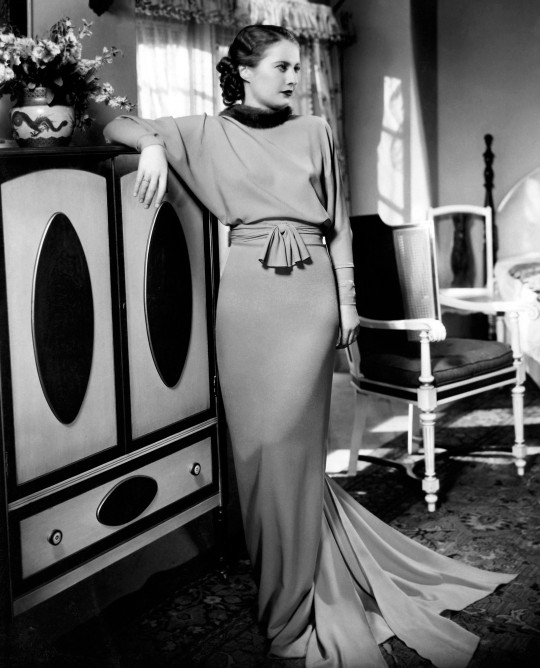
Barbara Stanwyck in A LOST LADY, 1934
48 notes
·
View notes
Text
youtube
A lot of adjectives come to mind when one mentions Fred Astaire: debonair, poised, elegant, captivating. And nouns too, especially grace, sophistication and talent. Fred Astaire is regarded by many as the greatest popular music dancer of all time. Astaire is usually remembered for his pairings with Ginger Rogers, who starred in several films with him, including Swing Time (1936).
Light on his feet, Fred Astaire revolutionized the movie musical with his elegant and seemingly effortless dance style. He may have made dancing look easy, but he was a well-known perfectionist, and his work was the product of endless hours of practice.
Astaire started performing as a child, partnering up with his older sister Adele. The two toured the vaudeville circuit before making it to Broadway in 1917. Among their many productions the brother-sister team starred in the 1927 George and Ira Gershwin musical Funny Face. For all his early success, though, career in the movies eluded Astaire. He had done a screen test, but he failed to attract any interest. A studio executive wrote at the time, "Can't sing. Can't act. Slightly balding. Can dance a little."
In 1932, Astaire suffered a career setback. His sister Adele retired from the act to marry a British aristocrat. He floundered a bit professionally without his usual partner, but then decided to go to Hollywood to try once more to break into film.
Finally, Astaire landed a small role in 1933's Dancing Lady with Joan Crawford. The role opened the door to new opportunities, and Astaire signed a contract with RKO Radio Pictures. He was matched up with another Broadway talent, Ginger Rogers, for Flying Down to Rio, also in 1933. Cast as supporting players, their dance number stole the movie. Astaire and Rogers appeared in several more films together, including The Gay Divorcee (1934) and Top Hat (1935). The duo became film's most beloved dance team. Their routines featured a hybrid of styles—borrowing elements from tap, ballroom and even ballet. Katharine Hepburn once described what each of them brought their successful partnership: "Fred gave Ginger class, and Ginger gave Fred sex."
Off-screen, Astaire was known for his relentless pursuit of perfection. He thought nothing of rehearsing a scene for days, and Rogers eventually tired of the grueling schedule. The pair went their separate ways after 1939's The Story of Vernon and Irene Castle. Years later, they reunited once more for 1949's The Barkleys of Broadway.
After the split with Rogers in 1939, Astaire performed with such leading ladies as Rita Hayworth, Cyd Charisse, Judy Garland, Leslie Caron and Audrey Hepburn. Some of his most famous musicals from his later career include Easter Parade with Garland and Funny Face with Hepburn.
As his movie roles tapered off, Astaire worked more in television. He often appeared as himself for special tribute shows. Astaire had a growing interest in dramatic parts, working on such series as Dr. Kildare. He also worked with another legendary dancer, Gene Kelly, on the documentary That's Entertainment, which explored the golden era of the movie musical.
Around this time, Astaire received his only Academy Award nomination for his supporting role in the 1974 disaster film The Towering Inferno. He also won an Emmy Award for his work on the television special A Family Upside Down in 1978. More accolades soon followed. Astaire received a Lifetime Achievement Award from the American Film Institute in 1981.
A few years later, Astaire was hospitalized for pneumonia. He died on June 22, 1987, in Los Angeles, California. With his passing, Hollywood had lost one of its greatest talents. Former actor and president Ronald Reagan, upon learning the news, called Astaire "an American legend" and "the ultimate dancer." Rogers said Astaire "was the best partner anyone could ever have."
I hope you enjoy this as much as I have.
Daily inspiration. Discover more photos at Just for Books…?
20 notes
·
View notes
Text
Jeanette MacDonald - The Iron Butterfly

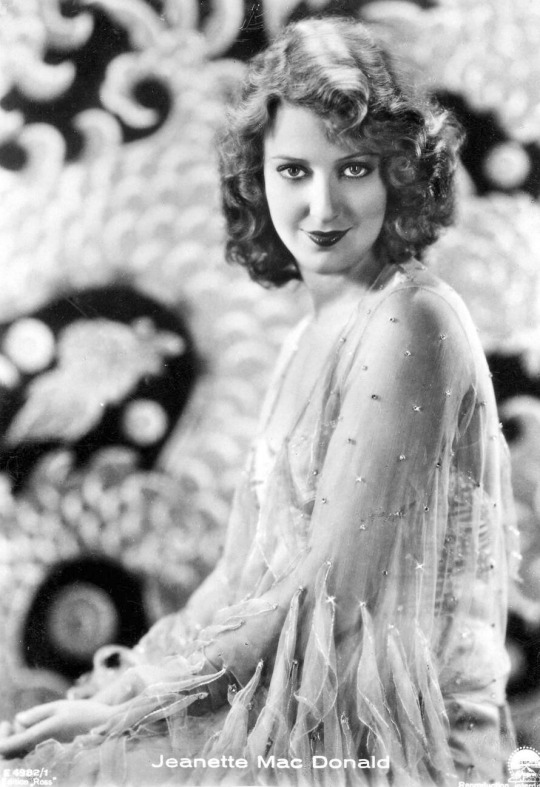
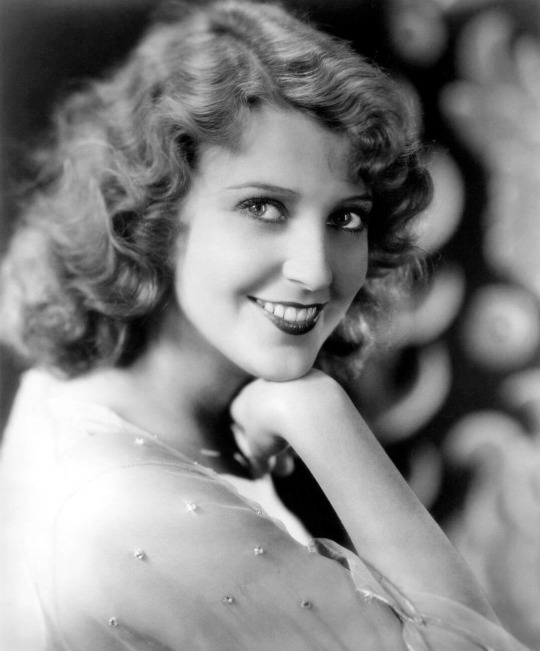


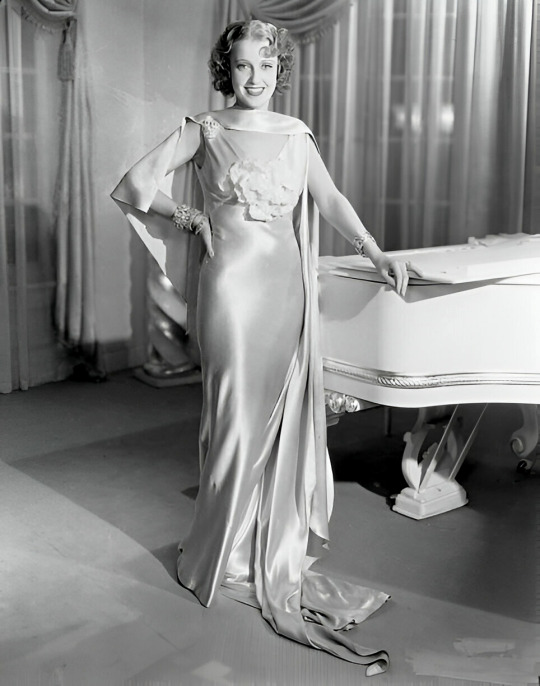
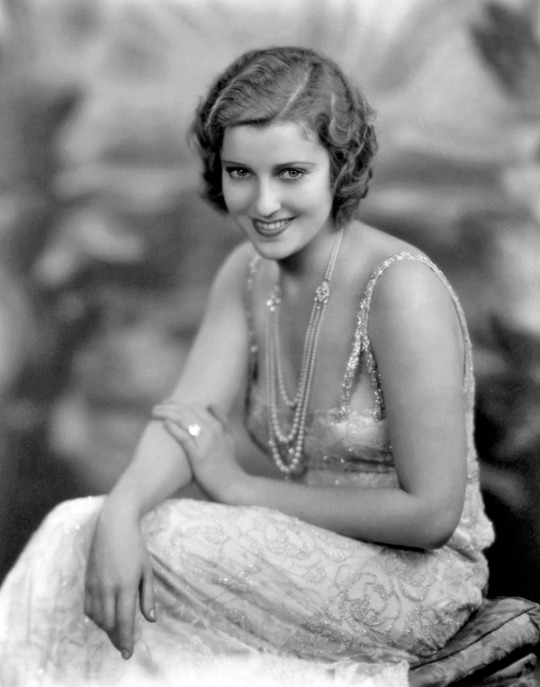
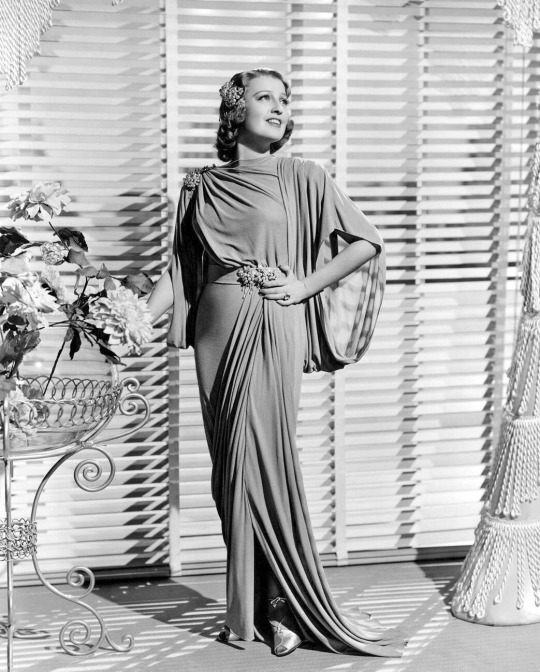
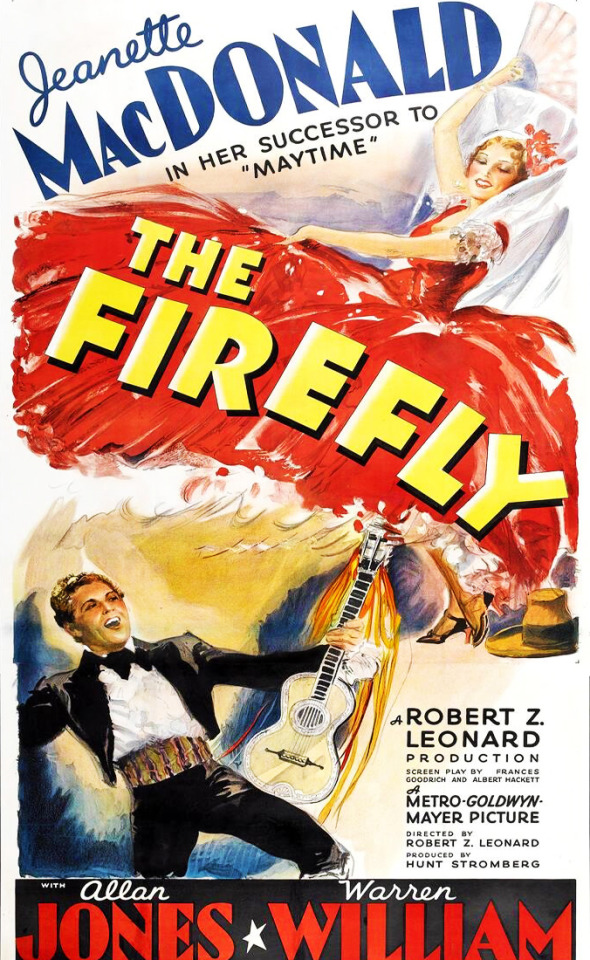
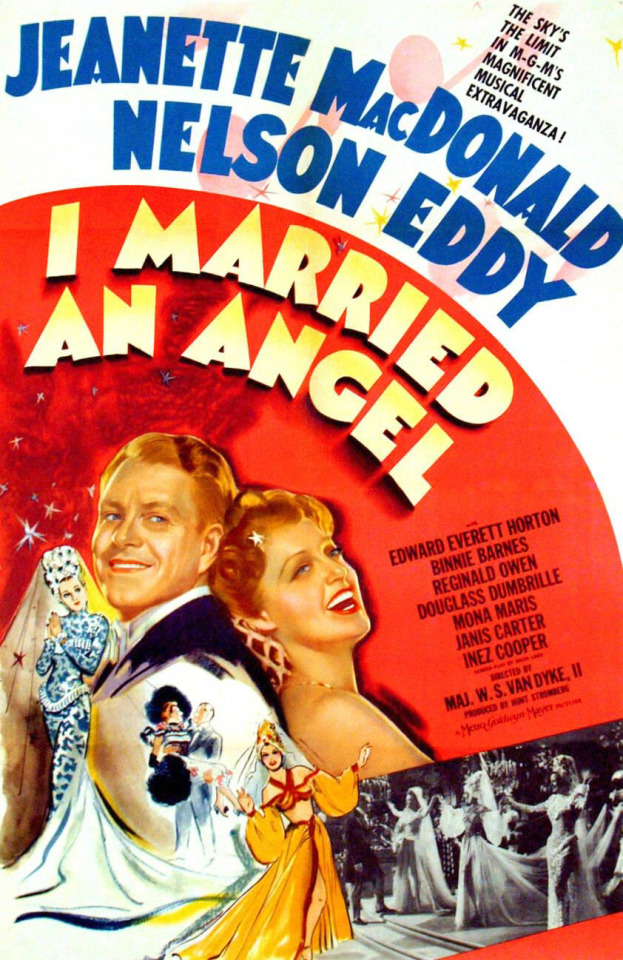
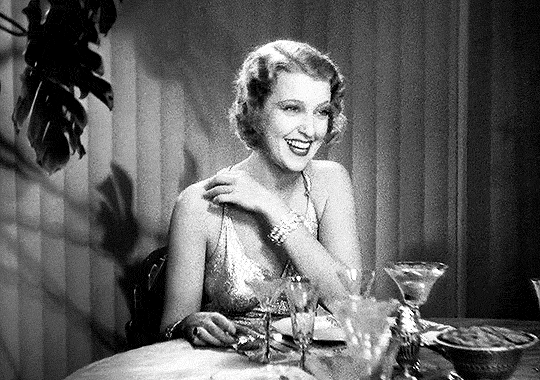
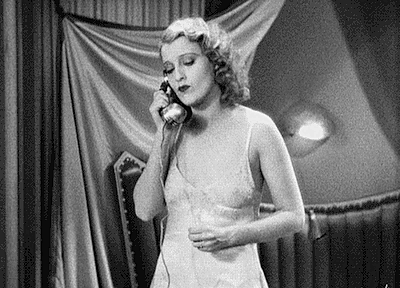
Jeanette Anna MacDonald (born in Philadelphia, Pennsylvania on June 18, 1903) was an American actress best remembered for her musical films in the 1930s. MacDonald was one of the most influential sopranos of the 20th century, introducing opera to film-going audiences and inspiring a generation of singers. She became known as "The Iron Butterfly", for she was one of the most lady-like and beautiful women in Hollywood, but when it came to contracts, she was tough and kept unwanted advances in check, rarely making a misstep in her career.
She was the third daughter of Scottish-American parents and the younger sister to character actress Blossom Rock ( who was most famous as "Grandmama" on the 1960s TV series The Addams Family), whom she followed to New York for a chorus job on Broadway in 1919.
After working her way up from the chorus to starring roles on Broadway, she was casted as the leading lady in Paramount Studios' The Love Parade (1929), a landmark of early sound films. Despite making many successful films with Paramount, she next signed with the Fox.
MacDonald then took a break from Hollywood in 1931 to embark on a European concert tour, performing at the Empire Theater in Paris and at London's Dominion Theatre. She was even invited to dinner parties with British Prime Minister Ramsay MacDonald and French newspaper critics. She returned to Paramount the following year and made more films.
In 1933, MacDonald left again for Europe, and while there signed with MGM, which brought her together with Nelson Eddy. The pair made eight pictures together, including Maytime (1937), arguably the best musical of all time. From then on, they were forever known as America's Singing Sweethearts.
In 1943, she left MGM and began pursuing other interests. She made her opera debut singing Juliette in Gounod's Roméo et Juliette in Montreal at His Majesty's Theatre. After the war, MacDonald made two more films, but quit the movies altogether in 1949. The 1950s found MacDonald in the Las Vegas nightclub circuit, on television, in sold-out concert tours, in studio recordings, and on musical stage productions.
In her final years, MacDonald developed a serious heart condition. She died in Houston, Texas while awaiting heart surgery; she was 61 years old.
Legacy:
Won the Screen Actors Guild award for Maytime (1937)
Crowned as the Queen of the Movies in 1939 by 22 million filmgoers in a New York Daily News survey as presented by Ed Sullivan
Has 2 RCA Red Seal gold records (one for "Indian Love Call" (1936) and another for "Ah, Sweet Mystery of Life" (1935)
Has 1 RIAA gold record for Favorites in Hi-Fi (1959)
Was one of the highest-paid actresses in MGM in the 1930s
Listed by the Motion Picture Herald as one of America’s top-10 box office draws in 1936
Co-founded the Army Emergency Relief and raised funds on concert tours in 1941 to support American troops
Awarded an honorary doctor of music degree from Ithaca College in 1956
Named Philadelphia's Woman of the Year in 1961
Is the namesake of the USC Thornton School of Music built a Jeanette MacDonald Recital Hall built in 1975
Has a bronze plaque unveiled in March 1988 on the Philadelphia Music Alliance's Walk of Fame
Honored with a block in the forecourt of Grauman's Chinese Theatre in 1934
Co-wrote an autobiography, Jeanette MacDonald Autobiography: The Lost Manuscript, in the 1950s and which was eventually published in 2004
Honored as Turner Classic Movies Star of the Month for March 2006
Has two stars on the Hollywood Walk of Fame: 6157 Hollywood Boulevard for motion picture and 1628 Vine Street for recording
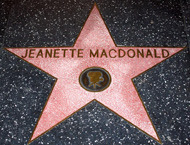
#Jeanette MacDonald#The Iron Butterfly#Silent Films#Silent Movies#Silent Era#Silent Film Stars#Golden Age of Hollywood#Classic Hollywood#Film Classics#Classic Films#Old Hollywood#Vintage Hollywood#Hollywood#Movie Star#Hollywood Walk of Fame#Walk of Fame#Movie Legends#Actress#hollywood actresses#hollywood icons#hollywood legend#movie stars#1900s
4 notes
·
View notes
Photo

MGM’s feature film Tarzan the Ape Man (1931), and its sequel, Tarzan and His Mate (1934), both starring former Olympic swimmer Johnny Weissmuller, turned out to be huge successes for the studio. They also cemented in the public’s mind the image of the monosyllabic, grunting ape man.
That iteration of the ape man was so popular that it was used in the non-MGM film serial Tarzan the Fearless (1933), starring another Olympic swimmer, Buster Crabbe.
Tarzan creator Edgar Rice Burroughs praised the films in public (they were making him money, after all), but privately hated their portrayal of his most prized creation. So he partnered with a family friend, Ashton Dearholt, and produced the 12 chapter-serial The New Adventures of Tarzan (1935).

The serial starred yet another Olympian, Henry Brix, in the title role. Ironically, Brix had been MGM’s first choice to play Tarzan in their films. Brix, unfortunately, broke his shoulder while filming another movie. MGM went with their second choice, Weissmuller, and the rest is history.
Frankly, just by physique alone I think Brix is the superior Tarzan. Even in his early films Weissmuller always looked a little doughy to me.
Brix’s Tarzan was also extremely faithful to the character from Burroughs’ novels: the cultured, educated, literate Lord Greystroke who spoke several languages, yet was unmistakably a man of action. This was the last time Tarzan would be depicted so until 1959′s Tarzan’s Greatest Adventure.
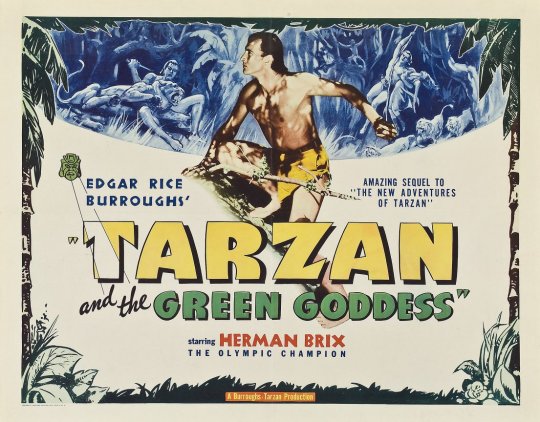
Once the troubled production was completed (and that story is practically a book in itself), movie theatres were offered two different was to exhibit the serial: as a stand-alone feature 70 minutes in length, entitled Tarzan and the Lost Tribe; or a feature-length (65 minutes) first episode, followed by the remaining 11 chapters.
Reviews of the film were generally poor in the US, and The New Adventures of Tarzan was the last Tarzan serial ever produced. However, like most Tarzan films of the time, it was a great success overseas. So much so, in fact, that in 1938 the last ten chapters of the serial were edited together to become the feature Tarzan and the Green Goddess.

Brix felt he was typecast after the serial was released, so he soon changed his name to Bruce Bennett. That’s how he’s billed in the numerous films and television episodes he appeared throughout the 1940s and 50s.
Some trivia regarding The New Adventures of Tarzan:
- The film was set, and largely filmed, in Guatemala.
- Producer Ashton Dearholt, who was married, met his leading lady, Ula Holt, on a previous trip to Guatemala. Dearholt was so smitten that he took Holt home to live with him. That promptly led Dearholt’s wife, Florence Gilbert, to leave with their two children and divorce him.
- Dearholt also played Raglan, the villain of the story. He claimed he had to step in to play the role when the actor hired for the part, Don Costello, got sick. This earns him the “George Santos Liar, Liar, Pants On Fire Award,” as there was no Don Costello. It was just a story Dearholt made up because he always planned to act in the film.
- Edgar Rice Burroughs fell in love with Dearholt’s ex, Florence Gilbert, when he first met her in 1929. During filming of the serial in 1935 Burroughs divorced his wife and married Gilbert, despite (or perhaps because) her being 30 years younger than him.
- Tarzan’s chimpanzee companion in the film was named Nkima, not Cheeta as in the MGM films. Jiggs the chimp played both roles, and he was paid $2,000 for his work in the serial.
- Herman Brix was hired at the salary of $75 a week but, other than his travel and accommodations in Guatemala, never got paid for his work.
- There are stories that Brix was personally chosen by Burroughs to play Tarzan. Brix himself stated that he only met Burroughs briefly after filming had wrapped. The only actor Burroughs actually picked for the role was Jim Pierce, for 1927′s Tarzan and the Golden Lion.
#The New Adventures of Tarzan#Tarzan#Herman Brix#Tarzan and the Green Goddess#Tarzan and the Lost Tribe#movie serials#Edgar Rice Burroughs
43 notes
·
View notes
Photo

Timeline Settings Disney Animated Canon Fantasia: Rite Of Spring 65,000 BCE Brother Bear 10,000 Bc Atlantis The Lost Empire 7000 BC Fantasia 2000: Pomp And Circumstance 1800 BCE Firebird Suite 1590 BCE Fantasia: The Pastoral Symphony) 1277 BCE Hercules 1179 Bce The Lion King 1178 Bce Moana 984 Bce Maui Gone Fishing short 984 Bce Ye Olden Days short 800 A.D. The Sword In The Stone 400s The Sword In The Stone 400s The Black Cauldron Dark Ages 570 Fantasia The Sources Apprentice 740 Aladdin 800s Fantasia Night On Bald Moutian 1025 Robin Hood 1194 Sleeping Beauty 1300s The Hunchback Of Notre Dame 1482 The Emperor's New Groove -1500 Snow White And The Seven Dwarfs Early 1500s Pocahontas 1607 Fun And Fancy Free: Mickey And The Beanstal 1734 Beauty & The Beast 1770s The Adventures Of Ichabod 1790 Melody Time: The Legend Of Johnny Appleseed 1795 Tangled 1820 50th Anniversary Animation Countdown short 1820 Frozen 1820 Tangled Ever After short 1841 Melody Time: Pecos Bill 1858 Alice In Wonderland 1862 Fantasia 2000 The Steadfast Tin Soldier 1865 Cinderella Mid 1860s Home On The Range Mid 1875s Fantasia Dance Of The Hours 1876 Tarzan Mid 1882 Disneypedia Living In The Jungle short 1882 Pinocchio 1883 Make Mine Music: The Martins And The Coys 1885 Make Mine Music: The Whale Who Wanted To Sing At The Met 1886 Make Mine Music Casey At The Bat 1888 Make Mine Music Johny Fedora And Alice Bluebonnet 1889 Melody Time Once Upon A Wintertime 1890 The Little Mermaid Mid 1890s Fantasia Nutcraker 1892 The Jungle Book 1893 Basil The Great Mouse Detective 1897 So You Think You Can Sleuth short 1897 Peter Pan 1900 Mr Toad 1906 Lady & The Tramp 1908 The Aristocats 1910 Atlantis The Lost Empire 1914 Fantasia 2000 Pines Of Rome 1924 The Many Adventures Of Winnie The Pooh 1926 Winnie The Pooh And A Day For Eeyore Short 1926 Mini Adventures Of Winnie The Pooh Short 1926 Winnie The Pooh 1926 The Ballad Of Nessie Short 1926 Get A Horse Short 1928 Fantasia 200 RHAPSODY BLUE 1932 The Flying Mouse short 1934 "The Band Concert short 1935 " Make Mine Music Peter And The Wolf 1936 Make Mine Music Blue Bayou 1936 "Elmer Elephant short 1936 " Thru the Mirror short 1936 Three Blind Mouseketeers short 1936 The Old Mill short 1937 Farmyard Symphony short 1938 The Brave Little Tailor short 1938 Paperman Short 1940 "Lend a Paw Short 1941 " Dumbo 1941 Fun And Fancy Free Bongo 1941 The Reluctant Dragon short 1941 Saludos Amigos 1942 South Of The Border With Disney short 1942 Bambi 1942 Symphony Hour short 1942 The Three Caballeros 1944 Make Mine Music All The Cats Join In 1946 "A Knight for a Day short 1946 " Bath Day short 1946 Melody Time Little Toot 1948 "Pueblo Pluto short 1949 " "Puss Cafe short 1950 " "Lambert the Sheepish Lion short 1951 " Donald Applecore short 1952 Water Birds short 1952 "Trick or Treat short 1952 " Don's Fountain of Youth short 1953 Casey Bats Again short 1954 Grand Canyon short 1958 101 Dalmatians 1961 Rescuers 1-2 1970s inner workings short 1980s The Fox & The Hound 1981 Oliver & Company 1988 Fantasia 2000: The Carnival Of The Animals 1999 Lilo & Stitch 2002 Chicken Little 2002 Easter Egg Runt On The Litter short 2002 Easter Egg Foxy Loxy Short 2002 Meet The Robinsons 2007 Keep Moving Forward Invention short 2007 Bolt 2008 Super Rhino short 2008 Wreck-It Ralph 2012 Big Hero 6 2014 Feast short 2014 Tokyo Go short 2014 Zootopia 2016 Wreck-It Ralph 2 2018 Meet The Robinsons 2037 Treasure Planet 10000000000000000000...
26 notes
·
View notes
Text




My favourite films of the 1930s:
1930: Morocco
1931: Dracula
1932: Blonde Venus
1933: She Done Him Wrong
1934: Sadie McKee
1935: The Devil Is A Woman
1936: The Petrified Forest
1937: Lost Horizon
1938: The Lady Vanishes
1939: The Women
What's yours?
2 notes
·
View notes
Photo
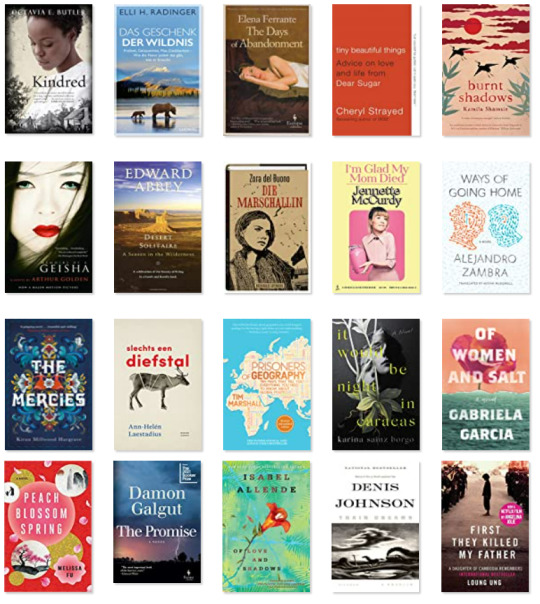
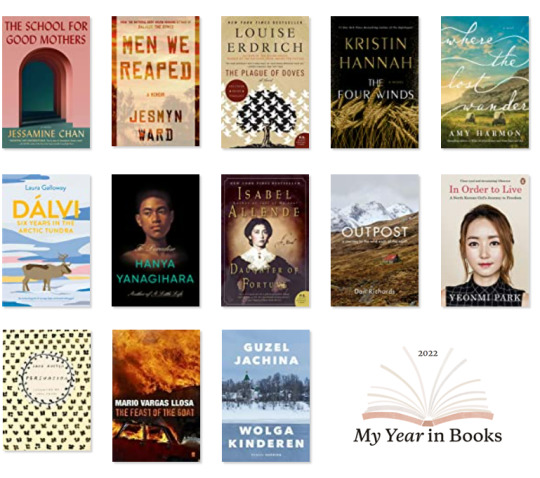
My Year in Books 2022:
11,299 pages read
33 books read
Children of the Volga/My Children by Guzel Yakinha
historical fiction, life, solitude
set in Russia (German colony Gnadenthal) between 1910s-1940s
main characters: Jakob Bach, Klara Grimm, Anna Bach
The Feast of the Goat by Mario Vargas Llosa
historical fiction, politics, betrayal
set in Dominican Republic in 1960s + 1990s
main characters: Urania Cabral, Augustín Cabral, Rafael Trujillo
Persuasion by Jane Austen
historical fiction, romance
set in United Kingdom (Somerset) in 1814-15
main characters: Anne Elliott, Frederick Wentworth, Lady Russell
In Order to Live by Yeonmi Park
nonfiction, memoir, oppression, human trafficking, survival
set in North Korea, China, South Korea in 1990s-2000s
Outpost: A Journey to the Wild Ends of the Earth by Dan Richards
nonfiction, memoir, travel
set in Iceland, US, Scotland, France, Japan, Svalbard
Daughter of Fortune by Isabel Allende
historical fiction, romance
set in Chile (Valparaíso), US (San Francisco) between 1843-1853
main characters: Eliza Sommers, Rose Sommers, Joaquín Andieta, Tao Chi'en
To Paradise by Hanya Yanagihara
fiction, dystopia, family, relationships
set in US (New York, Hawaii) in 1893, 1993 & 2093
main characters: David Bingham, Kawika Bingham, Charlie Bingham-Griffith
Dálvi: Six Years in the Arctic Tundra by Laura Galloway
nonfiction, memoir, introspection, Sámi, nature
set in northern Norway
Where the Lost Wander by Amy Harmon
historical fiction, romance, western
set in US (Missouri, Nebraska, Wyoming) between 1853-1858
main characters: Naomi May, John Lowry
The Four Winds by Kristin Hannah
historical fiction, family, hardship, Great Depression
set in US (Texas, California) in 1921 & 1934-1940
main characters: Elsa Martinelli, Loreda Martinelli, Anthony Martinelli
The Plague of Doves by Louise Erdrich
historical fiction, Indigenous, mystery
set in US (North Dakota) in 1960s, 1970s and before
main characters: Evelina Harp, Mooshum Milk, Antone Bazil Coutts
Men We Reaped by Jesmyn Ward
nonfiction, memoir, race, grief
set in US (Mississippi) between 1970s-2000s
The School for Good Mothers by Jessamine Chan
fiction, dystopia, motherhood
set in future US (Philadelphia)
main characters: Frida Liu, Harriet, Gust
First They Killed My Father: A Daughter of Cambodia Remembers by Loung Ung
nonfiction, memoir, war, Khmer Rouge, family, survival
set in Cambodia between 1975-1980
Train Dreams by Denis Johnson
historical fiction, solitude, western
set in US (Idaho) between 1910s-1930s
main character: Robert Grainier
Of Love and Shadows by Isabel Allende
historical fiction, romance, dictatorship
set in Chile in 1970s
main characters: Irene Beltrán, Francisco Leal
The Promise by Damon Galgut
(historical) fiction, family, grief, race
set in South Africa (Pretoria) in 1986, 1995, 1999, 2017
main characters: Amor Swart, Anton Swart, Astrid Swart
Peach Blossom Spring by Melissa Fu
historical fiction, family, survival, immigration, identity
set in China, Taiwan, US (Illinois, New Mexico) between 1938-2005
main characters: Meilin, Renshu/Henry, Longwei, Lily
Of Women and Salt by Gabriela Garcia
(historical) fiction, family, immigration, deportation
set in Cuba, US (Florida, Texas), Mexico between 1866-2019
main characters: Jeanette, Carmen, Gloria Ramos, Ana
It Would Be Night in Caracas by Karina Sainz Borgo
fiction, social unrest, oppression, grief
set in Venezuela
main character: Adelaida Falcón
Prisoners of Geography: Ten Maps That Tell You Everything You Need To Know About Global Politics by Tim Marshall
nonfiction, geopolitics, history, international relations
set worldwide
Stolen (Stöld) by Ann-Helén Laestadius
fiction, Sámi, discrimination, crime, family
set in northern Sweden
main character: Elsa
The Mercies by Kiran Millwood Hargrave
historical fiction, witch trials, romance
set in northern Norway (Vardø) between 1617-1619
main character: Maren Bergensdatter, Ursula Cornet
Ways of Going Home by Alejandro Zambra
(historical) fiction, identity, politics, dictatorship
set in Chile between 1980s-2000s
characters: nameless protagonist, Claudia, Eme
I’m Glad My Mom Died by Jennette McCurdy
nonfiction, memoir, abuse, mental health, child acting
set in US (LA)
The Marshal (Die Marschallin) by Zora del Buono
historical fiction, family, politics, war
set in Slovenia (Bovec) and Italy (Bari) between 1919-1980
main characters: Zora Ostan, Pietro del Buono
Desert Solitaire by Edward Abbey
nonfiction, nature, environment, national parks
set in US (Utah) in 1960s
Memoirs of a Geisha by Arthur Golden
historical fiction, geisha’s, Japanese culture
set in Japan (Kyoto) in 1930s-1940s
main character: Sakamoto Chiyo/Nitta Sayuri
Burnt Shadows by Kamila Shamsie
historical fiction, romance, family
set in Japan (Nagasaki), India (Delhi), Pakistan (Karachi) in 1945, 1947, 1982-1983, 2001-2002
main characters: Hiroko Tanaka, Sajjad Ali Ashraf, Raza Ashraf, Harry Burton
Tiny Beautiful Things: Advice on Love and Life from Dear Sugar by Cheryl Strayed
nonfiction, self help
The Days of Abandonment by Elena Ferrante
fiction, separation, abandonment
set in Italy (Turin) in 2000s
main character: Olga
The Gift of the Wild (Das Geschenk der Wildnis) by Elli H. Radinger
nonfiction, nature, animals, environment
set in US (Montana, Wyoming, Alaska, Arizona, Minnesota, Massachusetts, Texas), Germany
Kindred by Octavia E. Butler
historical fiction, sci-fi, time travel, race, slavery
set in US (California and Maryland) in 1810s-1820s and 1976
Main characters: Dana Franklin, Kevin Franklin, Rufus Weylin, Alice Greenwood
8 notes
·
View notes
Text

Termite Terrace Club - November 17th
1934 - Buddy Adventures - Dir. Ben Hardaway
1951 - Drip-Along Daffy - Dir. Chuck Jones
#LooneyTunes #LooneyTwt #daffyduck #porkypig #nastycanasta
TV
1992 - Tiny Toon Adventures Season 3: (“Little Dog Lost” / “Party Crasher Plucky” / “Homeward Bound”)
1993 - Animaniacs Season 1: “Of Nice and Men”/ “What a Dump!” / “Survey Ladies”
4 notes
·
View notes
Text



Frank Lloyd, the Scottish film director, actor, scriptwriter, and producer passed away on August 10th 1960 aged 74.
He maybe and obscure relatively unknown nowadays, but Lloyd has the distinction of being the first Scot to win an Oscar
Lloyd was born in Glasgow on Feb. 2, 1887, and went to Canada at the age of 23 to work as a construction engineer.
He came to Hollywood in 1913 and made his start directing one and two-reel silent movies. He made 50 such pictures in the first year.
He won Oscars for his direction of "Divine Lady" in 1929 and "Cavalcade" in 1933. He was nominated in 1935 for his direction of "Mutiny on the Bounty," and although he lost the award to John Ford, the film received the Academy Award for best picture.
Other films of Lloyd's direction included "Les Miserables" (1917), "A Tale of Two Cities" (1917), "Riders of the Purple Sage" (1918), "The Eternal Flame" (1922), "Oliver Twist" (1922), "Ashes of Vengeance" (1923), "Within the Law" (1923), "The Divine Lady" (1929) and "Drag" (1929). He was also credited as a screenwriter on "Les Miserables," "Riders of the Purple Sage," "Oliver Twist," "Ashes of Vengeance" and a number of other pictures.
Beyond his directing career, he also worked as a producer and acted in a number of his own early films. He also served as the president of the Academy of Motion Picture Arts and Sciences from 1934 to 1935.
During World War II, he entered the Army Air Corps as a major and won the Legion of Merit and the Air Medal. He was commanding officer of the 13th Air Force Combat Camera Unit and directed a Pacific airpower documentary.
Lloyd retired from filmmaking in 1945 to live on his ranch at Carmel Valley, but later returned to Hollywood to work on "Shanghai Story" and "Last Command."
He died in 1960 at St. John's Hospital in Santa Monica, Calif., following several months of heart and lung trouble, at the age of 73.
6 notes
·
View notes